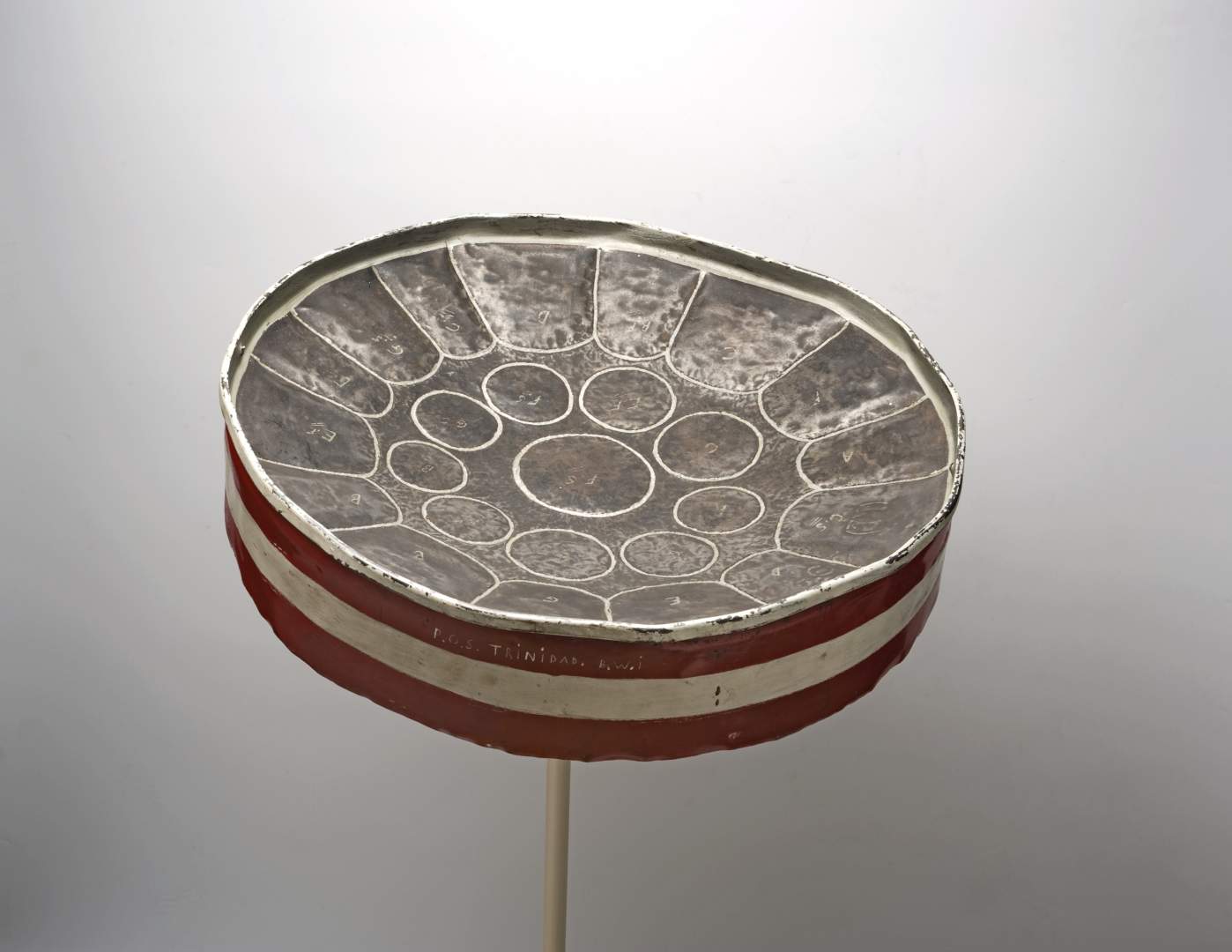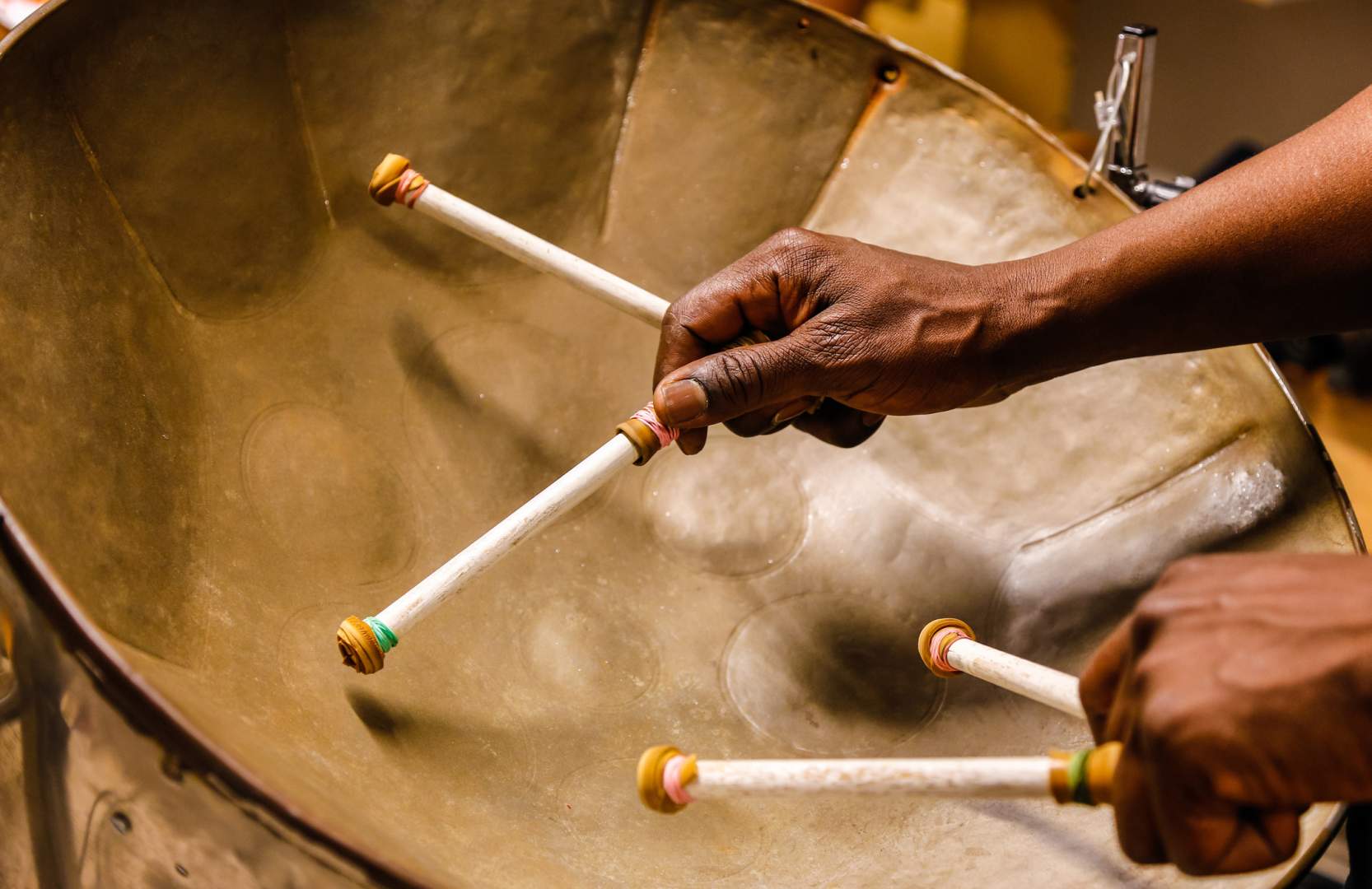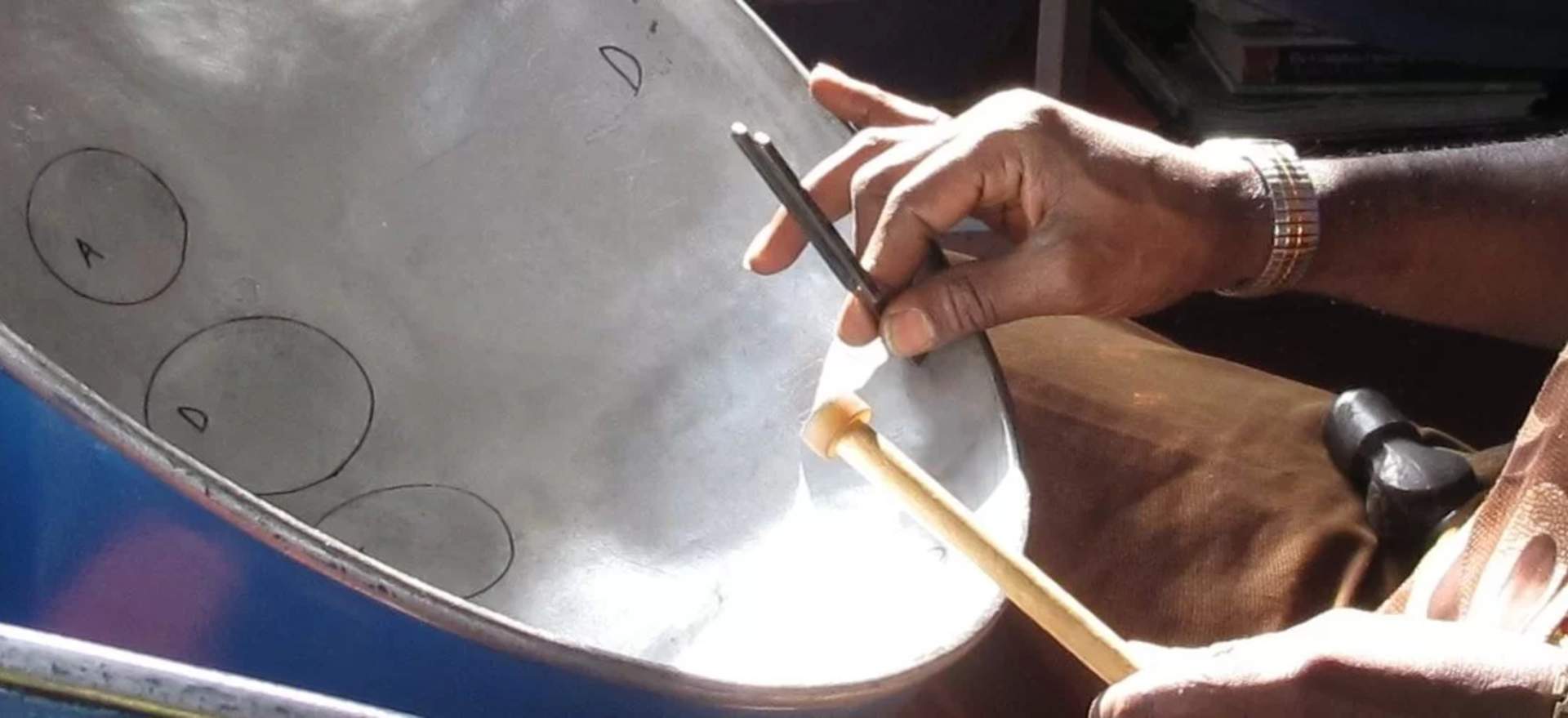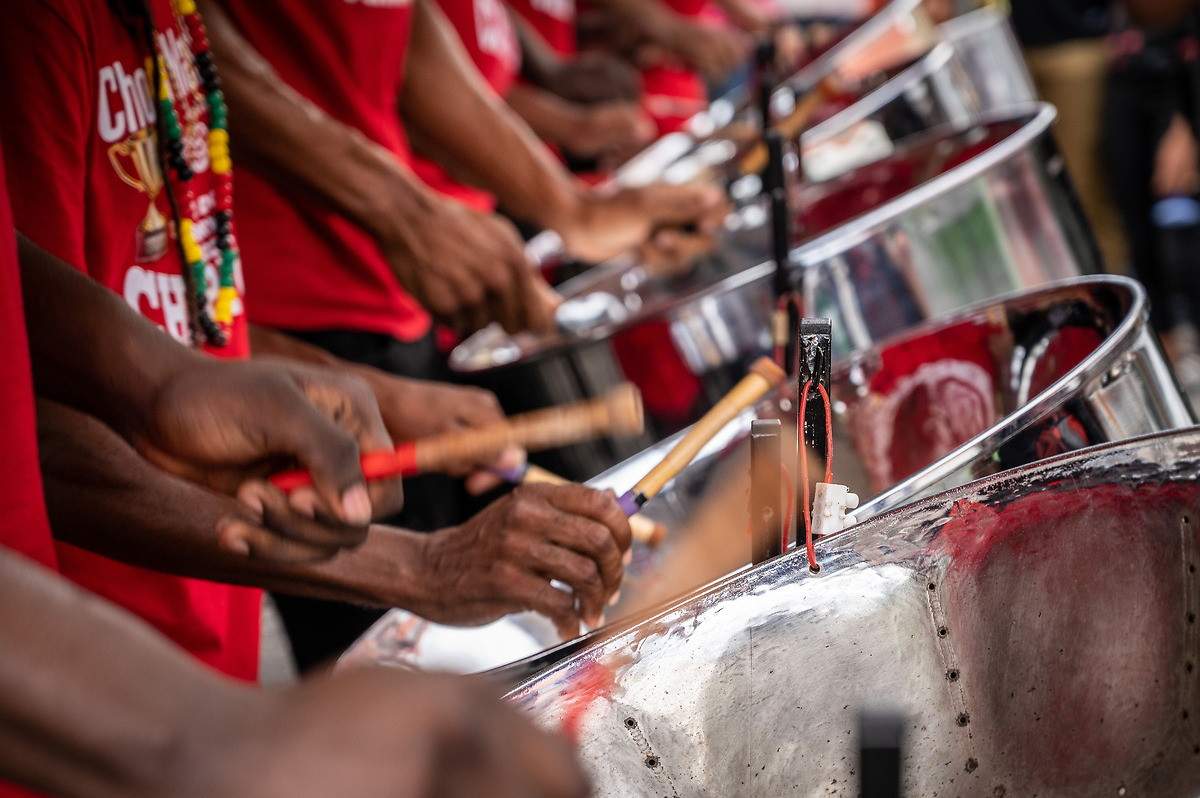How the steelpan shaped Caribbean music
Have you ever felt the vibrant heart of the Caribbean? Its pulse is the enchanting rhythm of the steelpan, a musical revelation that speaks to the soul's core. The percussion steelpan's melodious tones conjure images of sun-soaked beaches and festive island gatherings—a cultural emblem resonating with the spirit of the Caribbean people.
Origins of the Steelpan
The history of steel pan traces back to Trinidad and Tobago during the 1930s, a period of rich cultural amalgamation, which saw an evolution from earlier banned percussive instruments. Birthed from creative necessity, this melodious innovator arose as a defiant beacon of identity, carving a resonant place within Caribbean culture.
As community craftsmen molded the early pans from discarded oil drums, a "panyard culture" began to flourish around this percussion instrument. Surging as a testament to resilience and ingenuity, the steelpan emerged from the fires of social transformation. By the mid-20th century, the instrument had not only become a cornerstone in Caribbean music but also an emblematic symbol of innovation and cultural pride.

Trinidad and Tobago Birthplace
At the heart of the Caribbean's melodious landscape, Trinidad and Tobago boasts the origin of the ethereal steelpan. This quintessential instrument embodies the islands' rich cultural tapestry.
Forged through audacious creativity in the face of resource constraints, these islands birthed the steelpan from the industrial detritus of the wartime economy––transforming oil drums into purveyors of harmony.
The steelpan is the only acoustic musical instrument invented in the 20th century.
Amidst the lush tropics and vibrant culture of Trinidad and Tobago, the steelpan rose as a symbol of national identity. Remarkably, it transitioned from a makeshift expression to a globally recognized icon of Caribbean essence. The instrument exemplifies the resilience and ingenuity inherent to the spirit of its people.
Innovation from Adversity
In the crucible of societal challenges and oppression, the resilient Trinbagonians, undeterred by musical restrictions, innovated a new medium to voice their history and aspirations. The steelpan emerged as a revolutionary invention, encapsulating their indomitable spirit.
This novel instrument transcended its humble origins to become a pivotal element of Caribbean music.
Initially, the nascent steelpan bore the marks and dents of experimentation, as creators sought to perfect its melodic potential through relentless trial and error.
Ingenious tuning methods and the development of note patterns enabled the steelpan to articulate complex melodies, embodying the rich cultural narrative of its people.
This ascension of the steelpan to international acclaim is testament to the indelible spirit of innovation that defines the Caribbean ethos, showcasing a relentless pursuit of artistic expression against the backdrop of hardship.
Today, the steelpan is not only an emblem of Trinbago's triumph over adversity but also a beacon shining forth the island's innovative legacy and cultural vibrancy across the globe.
The Steelpan's Global Journey
From the streets of Trinbago to stages worldwide, the steelpan's sonorous tones have reverberated beyond its island birthplace, captivating global audiences with its unique timbre and versatility. This quintessentially Caribbean instrument, through passionate afficionados, recordings, and performances, has embarked on a remarkable odyssey, gracing international music scenes and integrating into a plethora of genres. It's not uncommon to witness its lilting melody accentuating jazz ensembles, symphony orchestras, and world music festivals, illustrating the steelpan's versatile adaptability and enduring appeal in the tapestry of world music.

From Carnival to Concert Halls
The steelpan's origins are rooted deeply in the history of Trinidad and Tobago, birthed from the resilient spirit of a people whose cultural fabric was woven under adversarial conditions.
Originally a fringe instrument, fashioned from discarded oil drums, its distinctive voice has transcended the festive cacophony of Carnival to fill the hallowed spaces of concert halls worldwide. The steelpan, through its melodic dexterity and capacious tonal range, has won the admiration of classical composers and musicians, challenging and redefining traditional notions of orchestral music.
Conversely, the steelpan has also become a symbol of cultural identity and pride. From its percussive beginnings on the streets of Port of Spain, it has risen to prominence as a legitimate focus of scholarly research and musical study, evidencing the instrument’s profound cultural significance and its versatility.
Today, apprentice pannists across continents seek to master this Caribbean creation, bringing new interpretations and techniques. This journey from humble street festivals to grand concert venues signifies not only the evolution of the steelpan but also reflects a broader narrative of Caribbean culture itself— resilient, dynamic, and compelling on the world stage.
UNESCO's Recognition of Cultural Heritage
The steelpan's unique resonance has garnered global recognition, elevating it as a symbol of Caribbean culture.
- Acknowledgment of the steelpan as a musical instrument with profound cultural value
- Inclusion in the Representative List of the Intangible Cultural Heritage of Humanity
- Preservation efforts that underscore its significance and encourage intercultural dialogue
- Education initiatives to perpetuate its technique and history for future generations
This distinction by UNESCO underlines the instrument's vast cultural impact and legacy.
The acknowledgment lends an authoritative affirmation of the steelpan's importance within the annals of global cultural heritage.
Crafting the Steelpan
The steelpan emerged from a crucible of ingenuity amidst Trinidad's post-colonial transformation, an epitome of cultural resilience and creativity.
In its nascent form, skilled artisans handcrafted the steelpan using discarded oil drums, meticulously hammering and tuning each to create an orchestra of pitches. Today, this tradition marries precision with artistry, yielding instruments capable of symphonic complexity.
The steel "pan-yard" is both workshop and sanctuary, where the alchemy of steelpan manufacturing preserves Caribbean musical heritage.

Artistry in Tuning
The mastery involved in steelpan tuning is a rigorous and intricate process, demanding a purist's ear for tone and pitch precision. The tuner's expertise transforms mere metal into an instrument of ethereal melodies.
Tuners meticulously sculpt sound by hammering each note to perfect pitch. This is a process of fine calibration.
The tuner must strike a balance, ensuring each note resonates with optimal clarity and maintains its timbre within a symphony of steelpans. The physical shaping of the drum's surface is just one element; the tuner must also intuit the metal's hidden potential, releasing harmonic overtones that define the pan's unique voice.
As in fine violin craftsmanship, the steelpan tuner must regard the instrument as a living entity. Their role becomes a blend of artist and engineer, bending steel to create scales as true and vibrant as any crafted by traditional luthiers. The tuner's skill ensures the pan's ability to produce what is known as "sweetness", the enchanting sound characteristic that captivates listeners.
Variations and Types
The steelpan family comprises diverse instruments, categorized by pitch range and role within ensembles.
Initiated with the Tenor (or Lead) Pan, it carries the melody with its high-pitched, bright timbre.
Descending in pitch, the Double Second Pans offer a fuller range, enabling complex harmonic support with their overlapping scales.
The Cello Pans, with their three or four barrel configuration, deepen the harmony, bringing rich, mellow tones to the steelpan chorus.
At the bass of the ensemble, the Six Bass Pans ground the music with their resonant, deep vibrations, forming a solid foundation.
Steelpan in Modern Music
Innovative musicians and producers are increasingly weaving the unique timbre of the steelpan into contemporary genres, infusing tracks with a distinctive, tropical resonance. Recording technology has amplified its presence, allowing the steelpan to comfortably inhabit the sonic landscapes of pop, jazz, and even electronic dance music.
The steelpan's versatility shines, as it transcends its traditional roots. Artists collaborate to blend its iconic sound seamlessly with modern musical expressions, further cementing the steelpan as an enduring and adaptable instrument in the global music scene.
Fusion Genres
In the realm of modern music, the steelpan's voice has become a cross-cultural ambassador, harmoniously unifying disparate musical traditions. It's a luminary in genre bridging, aiding artists in crafting new auditory experiences.
The steelpan has even infiltrated hip hop, an unexpected but welcome fusion. With its metallic timbre, it adds a refreshing layer to the genre's complex rhythms.
As artists experiment with juxtaposing classical motifs with Caribbean flair, the steelpan emerges as a pivotal element in the creation of eclectic symphonies. Its range and versatility afford composers a unique palette to manifest visions that cross traditional boundaries, elevating, for example, a classical orchestra with tropical nuances.
The marriage of steelpan with electronic genres is a testament to its dynamic adaptability. Far from the shores of its birthplace, it now resonates within the pulsing heart of electronic dance music, its infectious beats melding smoothly with synthetic sounds. Whether it's adding warmth to a pop hit or infusing an EDM track with an island vibe, the steelpan continues to demonstrate its capacity as a multifaceted and transcendent voice in the polyphonic tapestry of world music.

Steelpans and Digital Music Production
The integration of steelpans into digital music production highlights their universal appeal and adaptability to modern technology, transcending traditional acoustic environments.
Digital sampling of steelpan tones broadens their application across disparate music genres effortlessly and seamlessly.
With advances in music technology, producers can virtually replicate the steelpan's distinct soundwaves, maneuvering them into an array of genres to create innovative sounds that honor the instrument's origins while propelling it into the future.
The adept fusion of the steelpan within digital realms accentuates its rhythmic richness as a cherished sound sample, offering producers an unparalleled timbral quality. This innovation breathes new life into the pan, establishing it as a bridge between analog heritage and the avant-garde spectrum of contemporary music paradigms, fortifying its place as an enduring emblem of Caribbean musical identity.
How to play the steelpan
If you happen to have a steelpan store near to you that sells these Caribbean products, then you can try to learn playing the steel drum at home.
Watch a sort video on the basics of steelpan playing:
Approach this instrument with respect and curiosity.
Playing the steelpan requires a deft touch and a careful ear. Typically crafted from industrial drums, this idiophone's tonal range is achieved by striking different areas of the pan with mallets. Each section correlates to a specific musical note, configured in a layout that allows for intuitive melodic progression. Progressions, however, must be learned and cannot be intuited without familiarity with the instrument.
Learn the note layout and stick techniques.
Mastering the art of steelpan playing involves - like any musical instrument - dedicated practice and an appreciation of its unique musical language. Mastery requires learning specific note placements and mallet techniques tailored to the steelpan’s nuanced, delicate tone-production.
Refine your ear for pitch and refine your rhythm.
As you delve deeper into the nuances of steelpan performance, you'll notice the importance of pitch and rhythmic precision. Sustaining the correct tempo, combined with the intricate nuances of Caribbean rhythms, challenges and rewards the player with a fulfilling and vibrant musical experience. This experience becomes part of the dynamic soundscape associated with the Caribbean's rich cultural fabric.
Frequently Asked Questions About the Steelpan
1. What is a steelpan and how is it made?
A steelpan, also known as a steel drum, is a unique musical instrument that originated in the Caribbean islands, particularly in Trinidad and Tobago. It is made by transforming an oil drum into a melodic percussion instrument. The process involves selecting a high-quality oil drum, shaping it into a concave playing surface, adding notes, tempering the steel, and fine-tuning the pan to achieve the desired pitch and tonal quality. The end result is a beautiful and melodic steelpan, capable of producing a wide range of musical tones.
2. What are the different types of steelpan instruments?
Steelpan instruments, also known as pans or steel drums, are an integral part of Caribbean music and culture. These instruments are crafted from oil drums and produce beautiful melodic tones that can captivate anyone who hears them. There are various types of steelpan instruments, each with its unique characteristics and sound. Let's explore some of the most popular ones:
- Tenor Pan: The tenor pan, also called the lead pan or frontline pan, is the highest-pitched steelpan instrument. It is the “voice” of the steel orchestra and plays the melody or lead part of the music. With its bright and vibrant sound, the tenor pan stands out and sets the tone for the entire musical ensemble.
- Double Tenor Pan: The double tenor pan is an extended version of the tenor pan, featuring two drums instead of one. This instrument allows the player to access a wider range of notes, providing more flexibility in musical arrangements. The double tenor pan adds depth and complexity to the overall sound of the steel orchestra.
- Double Seconds: The double seconds steelpan instrument comprises two drums arranged in a pair. It is known for its rich, harmonic tones and is often used to provide accompaniment and harmonies in steelband arrangements. The double seconds pan adds a layer of warmth and depth to the overall sound of the ensemble.
- Guitar Pan: The guitar pan is designed to replicate the sound of a guitar. It features a curved set of notes, imitating the strings of a guitar. This steelpan instrument is commonly used to play rhythm and chordal patterns, providing a rhythmic foundation for the melody to soar above.
- Quadrophonic: The quadrophonic or quad pan is a versatile steelpan instrument that combines two sets of double tenor pans. With its four drums, this instrument offers an expanded melodic range and a unique texture to the steelband's sound. The quadrophonic pan can play both melody and harmony, making it a valuable addition to any steel orchestra.
- Bass Pan: The bass pan is the lowest-pitched steelpan instrument and forms the backbone of any steelband. It produces deep, resonant notes that create a solid foundation for the music. The bass pans are larger in size and require special handling and expertise to play effectively.
Each type of steelpan instrument brings its distinct character to the music, contributing to the mesmerizing and vibrant soundscape
3. What are some famous steelpan bands or musicians?
Some famous steelpan bands or musicians in the Caribbean showcase the rich musical heritage of the region. The distinct sound and captivating rhythms of the steelpan have drawn the attention of both locals and tourists alike. Here are a few notable names that have made significant contributions to the world of steelpan music:
- The Mighty Sparrow: Known as the "Calypso King of the World," The Mighty Sparrow has achieved international fame for his calypso performances. His energetic songs, combined with the enchanting melodies of the steelpan, have captivated audiences for decades.
- Desperadoes Steel Orchestra: Founded in the early 1940s, Desperadoes Steel Orchestra is one of the most revered steelpan bands in Trinidad and Tobago. Renowned for their technical prowess and innovative musical arrangements, their performances are a true spectacle.
- Phase II Pan Groove: This Trinidadian steelpan band has garnered numerous accolades for their exceptional musical skill and creativity. Led by the renowned musician Len “Boogsie” Sharpe, Phase II Pan Groove has revolutionized the steelpan sound with their unique arrangements and captivating performances.
- Invaders Steel Orchestra: With a legacy spanning over 75 years, Invaders Steel Orchestra is one of the oldest and most respected steelpan bands in Trinidad and Tobago. Their mastery of the instrument, paired with their soul-stirring musical compositions, has cemented their place in the history of steelpan music.
- Andy Narell: A Grammy-nominated jazz musician, Andy Narell has played a significant role in popularizing the steelpan in the global music scene. His fusion of Caribbean rhythms with jazz improvisation showcases the versatility and expressive potential of the instrument.
These are just a few examples of the many talented steelpan bands and musicians in the Caribbean. Their contributions have not only shaped the genre of steelpan music but also create an unforgettable experience for those who have the opportunity to witness their performances.
4. How can one learn to play the steelpan?
Learning to play the steelpan is an exciting journey that can be enriching and rewarding. Here are some steps to help you get started:
- Find a reputable instructor: To kickstart your steelpan journey, it's crucial to find a skilled and experienced instructor. Look for someone who has a deep understanding of the instrument and can guide you through the learning process effectively.
- Begin with the basics: Start by learning the fundamental techniques of playing the steelpan. This involves understanding how to hold the mallets, strike the notes, and produce clear and resonant tones. Practice these basic techniques until you feel confident and comfortable.
- Learn the music theory: A solid foundation in music theory will greatly enhance your steelpan playing skills. Understanding concepts such as rhythm, melody, and harmony will enable you to read sheet music, play in different time signatures, and improvise effectively. Dedicate time to studying these principles.
- Start with simple songs: Begin your journey by playing simple songs that are specifically composed for the steelpan. This will allow you to familiarize yourself with the instrument's range and develop your playing technique. As you progress, you can tackle more complex compositions.
- Join a steelpan ensemble or band: Playing alongside other musicians is a great way to enhance your skills and immerse yourself in the rich culture of steelpan music. Joining a steelpan ensemble or band will provide opportunities for collaboration and performance, allowing you to grow as a player.
- Practice regularly: Consistent practice is essential for mastering any musical instrument, and the steelpan is no exception. Dedicate regular time to practice sessions, focusing on both technical exercises and repertoire. Practice will build muscle memory, improve your playing speed, and refine your overall technique.
- Attend workshops and festivals: To further deepen your knowledge and skills, consider attending workshops and festivals dedicated to steelpan music. These events often feature renowned steelpan players and instructors who can offer valuable insights and techniques.
- Embrace the culture: Finally, immerse yourself in the vibrant Caribbean culture that surrounds the steelpan. Gain an understanding of the history, traditions, and significance of the instrument. This holistic approach will enhance your appreciation for the music and inspire you to become a well-rounded steelpan player.
Remember, learning to play the steelpan is a journey that requires dedication, patience, and passion. Embrace each step along the way, and enjoy the beautiful